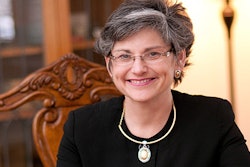Lisa Jackson, the first African-American to serve as head of the U.S. Environmental Protection Agency, is committed to diversifying the landscape of environmental advocacy, which is often defined by the contributions of White Americans.
While in the midst of preparing for a busy Earth Day, Jackson spoke with Diverse about a few of her forthcoming plans for the agency. Among them are reducing greenhouse gas emissions, improving air quality, managing chemical risks, cleaning up hazardous waste sites, and protecting America’s water.
“We are trying to make sure that the American people understands that the EPA hears them,” said Jackson. “They want a clean environment. The want healthy air. They want clean drinking water, and we are going be there to help provide those things. A cleaner and healthier world, that is our core business.”
Before becoming EPA’s Administrator, Jackson served as chief of staff to New Jersey Gov. Jon S. Corzine. Prior to that, she was appointed by Corzine to be commissioner of the state’s Department of Environmental Protection (DEP) in 2006.
Here is an excerpt from Diverse’s interview with Jackson.
DI: How will you be spending Earth Day?
LJ: I will be testifying at 9:30 a.m. along with Energy Secretary David Chew and Secretary of Transportation Ray LaHood. The three of us will be on a panel testifying on the American Clean Energy Security Act, which is a major piece of energy and climate legislation being heard in Congress. After the hearing, I’ll be getting on a plane to the G8 Environment Ministers Meeting in Sicily, Italy.
DI: Months after President Richard Nixon created the Environmental Protection Agency in 1970, the air and water got cleaner, DDT was banned, leaded gas phased out, and recycling phased in. Nearly 40 years later, what is at the forefront of the EPA’s agenda?
LJ: One of the first [things] is [solidifying] a recognition that the environment has changed and improved since 1970. One of the things that I am looking to do is really open up the environmental movement to more people of color. As an African-American, I think there is still, sadly, people who see the environmental movement as belonging to White Americans and clearly the history of it is that way. I think, more and more, everywhere I go, I see communities that are concerned about environmental issues … and those are communities of color. We need to make sure that they see themselves here [in the EPA] and that they feel comfortable knowing that the EPA is here to address issues of concern for people of color.
DI: What is the EPA doing to encourage “green” development on college campuses, particularly at minority-serving institutions?
LJ: [Colleges and universities] actually push us. Historically Black institutions and Hispanic-serving institutions are churning out young talented people who are technically trained, who are interested in environmental sciences, biological sciences and chemistry. First and foremost, we are going to make sure that we are recruiting them, so that we change our entry-level work force and make sure they are represented there. But also, students at universities are the catalyst for change at their own schools. There are a lot of greening efforts. Howard University, here in the District [of Columbia], we will soon be working with them on a greening effort on their campus. We give to the school, but they also give back to us.
DI: Will the EPA provide institutions with financial assistance for “greening” their infrastructure?
LJ: The stimulus package includes billions of dollars for the Department of Education to build green schools. Those are primarily primary and high schools, but there are also grants for renewable energy and energy efficiency. That is what is going on right now. If there is any news coming out of Washington, it is the emphasis on greening up our energy sector and using the green energy sector as a way to jolt our economy out of this recession.
DI: What type of message do you think it sends to communities of color to see first lady Michelle Obama planting a garden at the White House or yourself at the helm of the EPA?
LJ: The president’s election, my nomination and the first lady’s obvious concern for the environment has literally changed the face of environmentalism almost over night. Now, what we have to do is make sure that is not just symbolic change. We have to be effective advocates and effective workers for all of our communities. The future economy is going to be a green economy. If our communities are not apart of that economy, we are going to be left out.
© Copyright 2005 by DiverseEducation.com



















